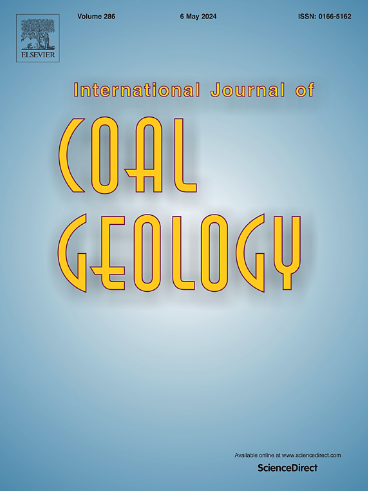Organic matter content and its role in shale porosity development with maturity: Insights from Baltic Basin Silurian shales
IF 5.7
2区 工程技术
Q2 ENERGY & FUELS
引用次数: 0
Abstract
Porosity, pore size distribution, and surface area are the main petrophysical characteristics indicative of gas storage capacity in shales. This paper investigates the influence of organic matter (OM) content on the evolution of these parameters at different stages of thermal maturity. Ninety-six samples of Silurian shales from the Baltic Basin ranging in maturity from immature to overmature were selected for this study. Porosity evolution was evaluated using N2 and CO2 low-pressure gas adsorption. At the immature stage, the samples with high OM content are characterized by lower porosity than the organic-matter-lean samples. At this stage, high OM content leads to the disruption of stiffer mineral framework; mixed organic-mineral framework is more prone to mechanical compaction than mineral framework. At the oil window stage, porosity of OM-rich samples declines due to pore-throat plugging and pore filling by bitumen. At the wet and dry gas generation stage, porosity of OM-rich samples increases mainly due to pore-throats unplugging. Absent or weak correlation between porosity and OM content at the wet and dry gas stages indicates poor development of OM-hosted secondary porosity. High contents of clay minerals in the studied samples fail to provide the rigid mineral framework and pressure shadows necessary for OM-hosted secondary porosity development.
有机质含量及其在页岩孔隙度演化中的作用——来自波罗的海盆地志留系页岩的启示
孔隙度、孔径分布和表面积是表征页岩储气能力的主要岩石物性特征。本文研究了有机质含量对不同热成熟阶段这些参数演化的影响。选取了96份波罗的海盆地志留系页岩样品进行研究,样品成熟度从未成熟到过成熟不等。利用N2和CO2低压气体吸附评价孔隙度演化。在未成熟阶段,有机质含量高的样品孔隙度低于有机质含量低的样品。在这一阶段,高OM含量导致较硬的矿物框架被破坏;混合有机-矿物框架比矿物框架更容易发生机械压实作用。在油窗阶段,富om样品的孔隙度因沥青堵塞孔喉和充填孔隙而下降。在干湿生气阶段,富om样品孔隙度的增加主要是由于孔喉的脱堵。干湿气阶段孔隙度与有机质含量相关性不明显或较弱,说明含有机质次生孔隙发育不良。研究样品中粘土矿物的高含量不能提供有机质次生孔隙发育所必需的刚性矿物框架和压力阴影。
本文章由计算机程序翻译,如有差异,请以英文原文为准。
求助全文
约1分钟内获得全文
求助全文
来源期刊

International Journal of Coal Geology
工程技术-地球科学综合
CiteScore
11.00
自引率
14.30%
发文量
145
审稿时长
38 days
期刊介绍:
The International Journal of Coal Geology deals with fundamental and applied aspects of the geology and petrology of coal, oil/gas source rocks and shale gas resources. The journal aims to advance the exploration, exploitation and utilization of these resources, and to stimulate environmental awareness as well as advancement of engineering for effective resource management.
 求助内容:
求助内容: 应助结果提醒方式:
应助结果提醒方式:


